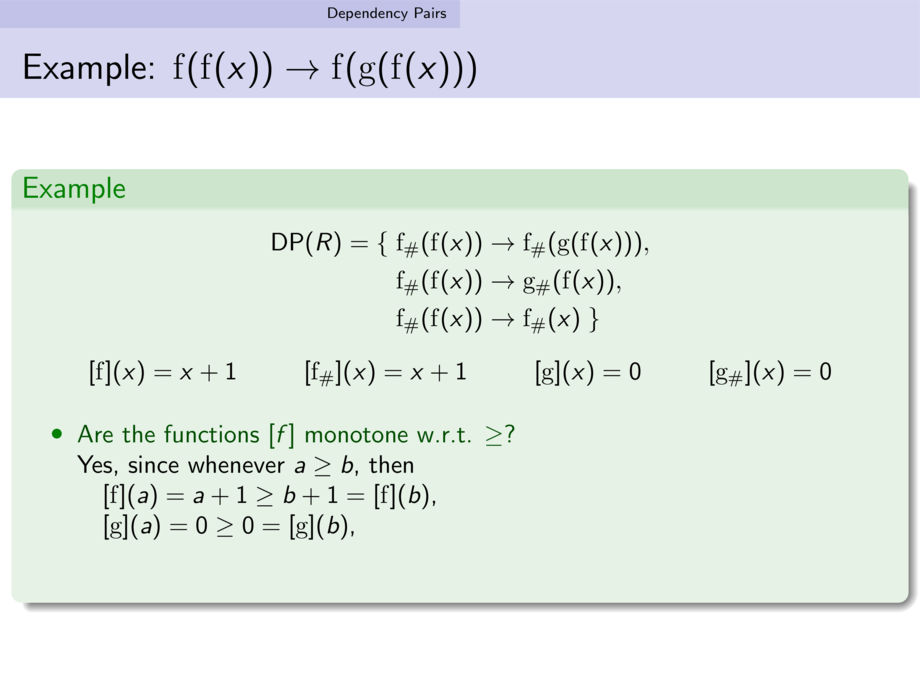
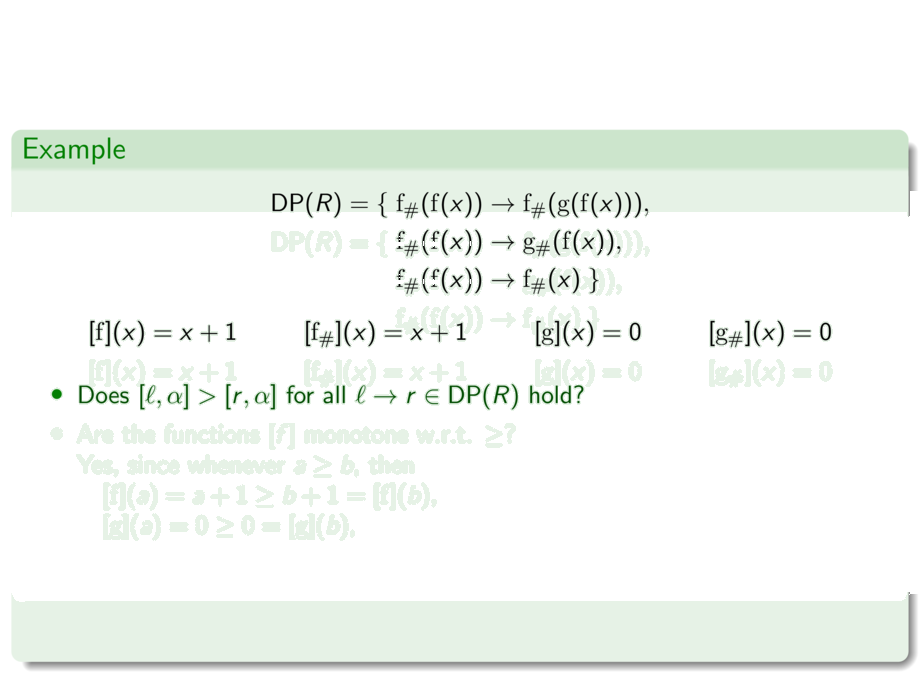
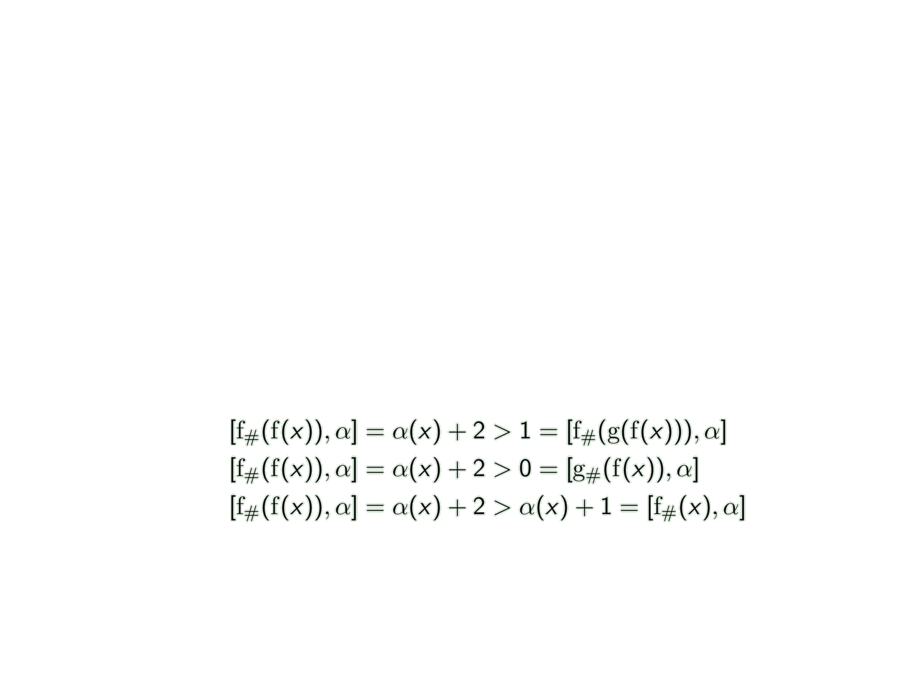
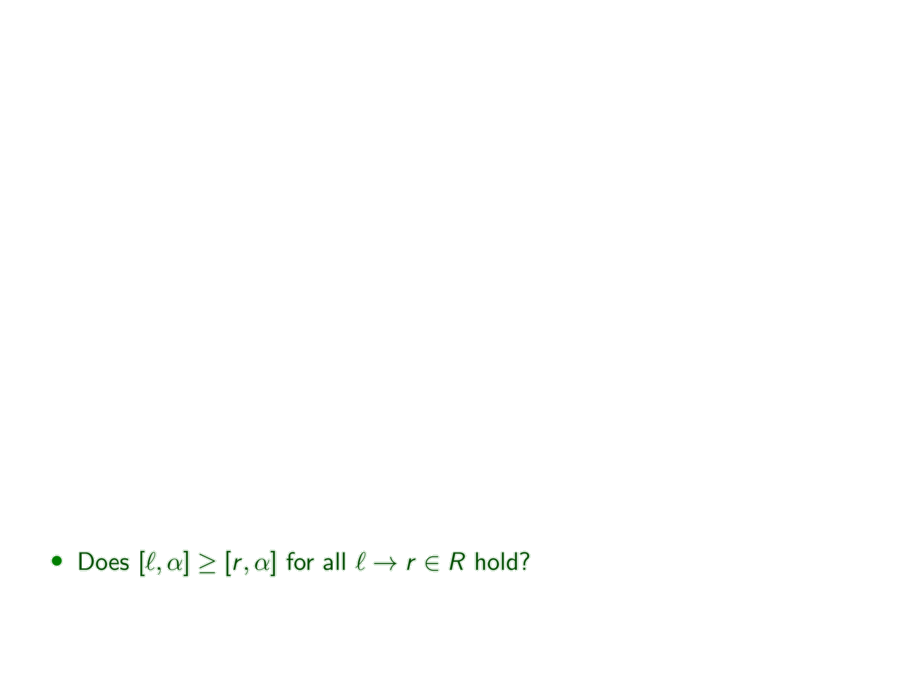
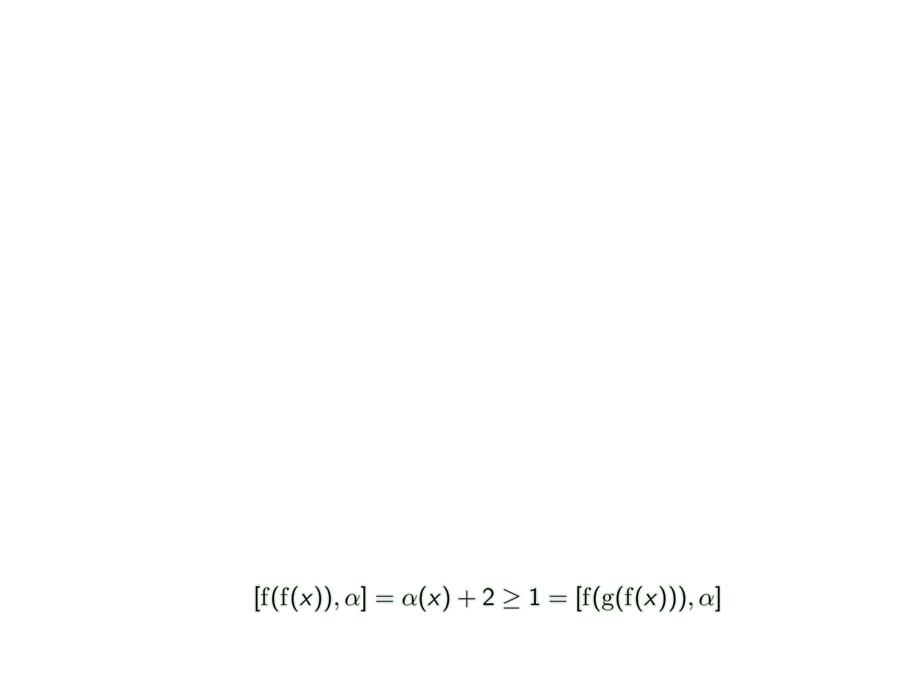































































































248/365
\begin{frame}
\frametitle{Example: ${\rm f}({\rm f}(x)) \to {\rm f}({\rm g}({\rm f}(x)))$}
\begin{example}
\pause
\vspace{-1em}
\begin{align*}
\DP(R) = \{\;
&{\rm f}_\#({\rm f}(x)) \to{\rm f}_\#({\rm g}({\rm f}(x))),\\
&{\rm f}_\#({\rm f}(x)) \to {\rm g}_\#({\rm f}(x)),\\
&{\rm f}_\#({\rm f}(x)) \to {\rm f}_\#(x)
\;\}
\end{align*}
\vspace{-3.5em}
\pause
\begin{align*}
\interpret{{\rm f}}(x) &= \alt<4->{x+1}{???} & \interpret{{\rm f}_\#}(x) &= \alt<4->{x+1}{???} &
\interpret{{\rm g}}(x) &= \alt<4->{0}{???} & \interpret{{\rm g}_\#}(x) &= \alt<4->{0}{???}
\end{align*}
\pause\pause
\vspace{-1.5em}
\begin{itemize}
\alt<-6>{
\item \gemph{Are the functions $[f]$ monotone w.r.t. $\ge$?}\\\pause
Yes, since whenever $a \ge b$, then
\\\quad $\interpret{{\rm f}}(a) = a + 1 \ge b + 1 = \interpret{{\rm f}}(b)$,
\\\quad $\interpret{{\rm g}}(a) = 0 \ge 0 = \interpret{{\rm g}}(b)$,\\[1em]
}{
\pause\pause
\item \gemph{Does $\interpret{\ell,\alpha} > \interpret{r,\alpha}$ for all $\ell \to r \in \DP(R)$ hold?}
\pause
\vspace{-.8em}
\begin{align*}
\interpret{{\rm f}_\#({\rm f}(x)),\alpha}
= \alpha(x)+2
&> 1
= \interpret{{\rm f}_\#({\rm g}({\rm f}(x))),\alpha}\\
\interpret{{\rm f}_\#({\rm f}(x)),\alpha}
= \alpha(x)+2
&> 0
= \interpret{{\rm g}_\#({\rm f}(x)),\alpha}\\
\interpret{{\rm f}_\#({\rm f}(x)),\alpha}
= \alpha(x)+2
&> \alpha(x)+1
= \interpret{{\rm f}_\#(x),\alpha}
\end{align*}
\vspace{-1.8em}
\pause
\item \gemph{Does $\interpret{\ell,\alpha} \ge \interpret{r,\alpha}$ for all $\ell \to r \in R$ hold?}
\pause
\vspace{-.8em}
\begin{align*}
\interpret{{\rm f}({\rm f}(x)),\alpha}
= \alpha(x)+2
\ge 1
= \interpret{{\rm f}({\rm g}({\rm f}(x))),\alpha}
\end{align*}
\vspace{-2.3em}
}
\end{itemize}
\onslide<11>{Hence we have proven termination.}
\end{example}
\end{frame}

